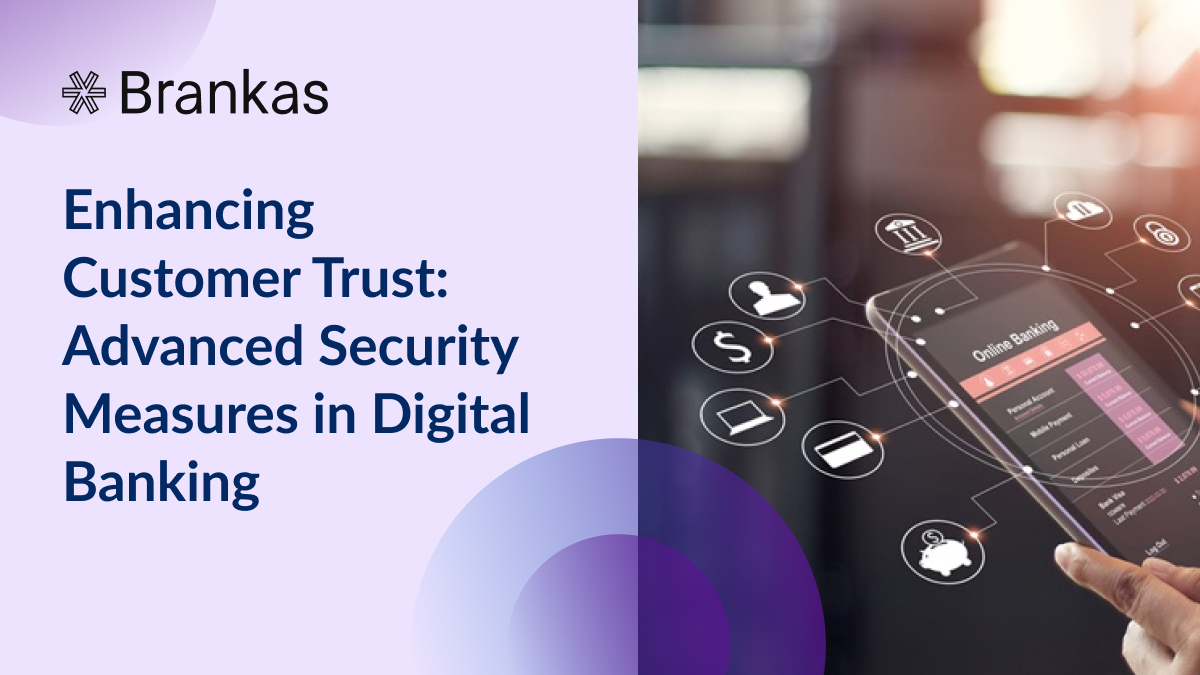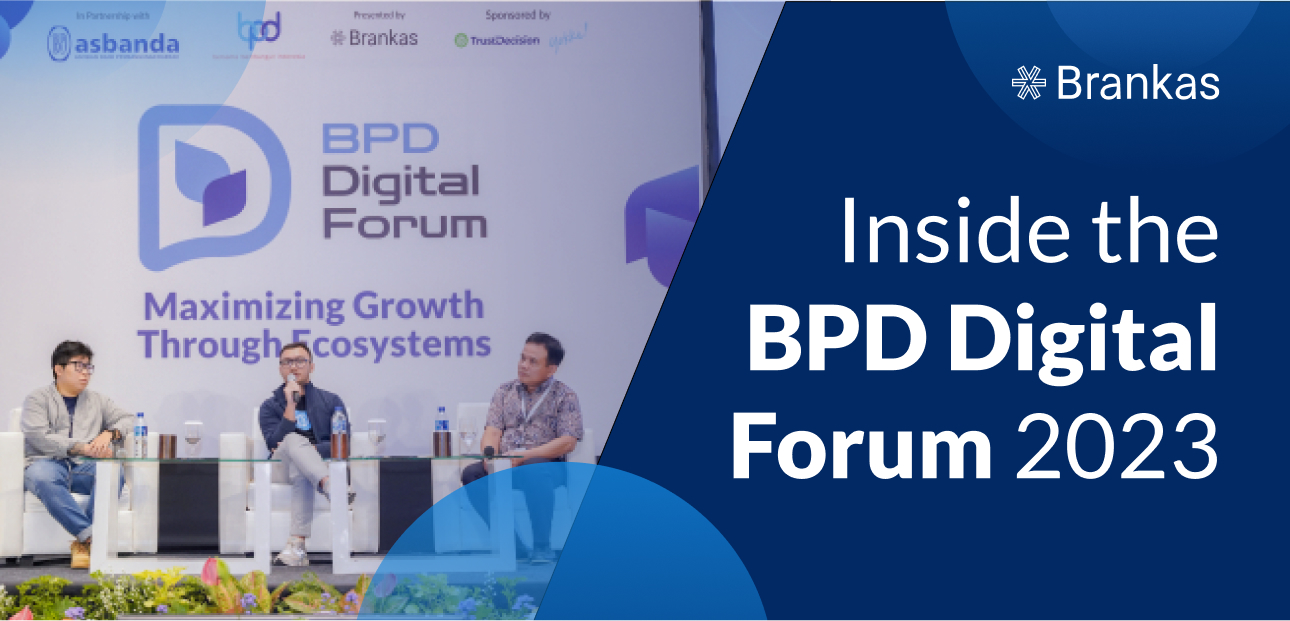
What is Open Finance? How does it matter to end-users? Convenience is a key value added to users. It also unlocks a new phenomenon known as embedded finance.

“Banks are the beholders of people’s money; hence, trust plays a significant role in customer acquisition and engagement.” (Raktim Singh, Finextra)
Customer trust is fundamental in digital banking. Trust forms the bedrock of the relationship between banks and customers. Customers expect their financial data to be safeguarded against unauthorized access and misuse when they entrust it to a bank. Security assurance is essential in fostering trust because it signifies the bank’s commitment to protecting customers' interests. Trust is necessary for customers to engage in online banking activities, which leads to missed opportunities for banks and customer satisfaction.
The proliferation of cyber threats and sophisticated hacking techniques underscores the necessity for robust security measures. Security breaches result in financial losses and pose risks, such as identity theft, potentially eroding trust in financial institutions. Implementing stringent security protocols is essential to safeguard the integrity of banking systems and maintain customer confidence.
Cyber threats are multiplying, ranging from phishing attacks and malware infections to sophisticated ransomware campaigns and data breaches targeting banks. Flagstar Bank in the USA fell victim to a ransomware attack in 2020, and hackers publicly disclosed personal information belonging to the bank’s customers and attempted to coerce the bank into paying a ransom. Pichincha Bank in Ecuador experienced a cyber-attack in 2021 that caused disruptions to customers' access to banking services.
Cybercriminals are increasingly leveraging advanced tactics and techniques to exploit vulnerabilities in banking systems and compromise sensitive customer data. The impact of security breaches extends beyond financial losses. It erodes customer trust and confidence in the security of digital banking platforms. Gaining insights into the nature and sophistication of cyber threats is vital for banks to develop proactive strategies and robust defenses to safeguard against potential security risks. Banks can mitigate risks, protect customer assets, and uphold the integrity of digital banking operations by staying vigilant and proactive in monitoring and addressing emerging threats.
These cutting-edge security technologies play a crucial role in ensuring the safety and integrity of digital banking operations.
1. Encryption technologies
Data encryption uses mathematical algorithms to convert plaintext to ciphertext. These formulas use complex mathematical functions and keys to obscure data and make it incomprehensible. Only those with the relevant key may decrypt the data. Encryption techniques are computationally demanding to weaken attackers' ability to break the encryption and retrieve the original data.
Financial institutions utilize two forms of encryption to protect data: symmetric and asymmetric. Symmetric encryption, such as AES (Advanced Encryption Standard), uses the same key to lock AND unlock data. Asymmetric encryption, such as RSA (Rivest-Shamir-Adleman) and ECC (Elliptic Curve Cryptography), use two keys: one to lock (encrypt) data and another to unlock (decrypt) it.
2. AI (artificial intelligence) and ML (machine learning)
AI-powered systems, such as Vectra’s Cognito, can evaluate massive volumes of data in real-time, detecting irregularities and potential security concerns. Machine learning algorithms are evolving and adapting constantly, depending on fresh data, allowing institutions to keep ahead of growing cyber threats. One significant advantage of AI and ML over traditional cybersecurity solutions is its capacity to learn and adapt. These systems remain adaptable, updating their knowledge with fresh data to increase their detection and response capabilities.
Danske Bank employs an AI-driven fraud detection system. This deep learning tool has boosted fraud detection by 50% and cut false positives by 60%. It has also automated numerous essential decisions, directing cases to human analysts when necessary. HSBC plans to combat money laundering by incorporating machine learning technologies into its system. The AI program will collect internal, publicly available, and transactional data from a client’s broader network to identify signs of money laundering.
1. Certifications
Banks demonstrate their commitment to maintaining robust security controls and safeguarding sensitive financial data through certifications such as ISO 27001, SOC 2, or PCI DSS compliance. Certification processes typically involve rigorous assessments, audits, and evaluations of security policies, procedures, and infrastructure, ensuring alignment with industry-recognized security frameworks.
2. API implementation
Deploying APIs (Application Programming Interfaces) in digital banking enables secure integration and communication between diverse banking systems and services. Robust authentication mechanisms, such as OAuth or OpenID Connect, linked with fine-grained access controls, ensure that only authorized parties can access sensitive data and functionalities. Encryption techniques protect data transmitted over APIs from interception and tampering, safeguarding the confidentiality and integrity of customer information.
3. Blockchain
Blockchain can improve bank security in a variety of ways. It can develop robust know-your-customer (KYC) solutions since its cryptographic safeguards ensure all network members' identities are validated. Information is easily transferred across network participants, lessening the need for intermediaries in data dissemination. The decentralized structure of blockchain eliminates single points of failure and dramatically lowers the risk of data breaches. Some blockchain protocols add an extra degree of security using smart contracts, which enable automatic transactions when certain criteria are satisfied.
Visa created a platform to process bank-to-bank transactions and expedite cross-border corporate payments securely. It utilizes blockchain architecture to streamline transactions within its network, ensuring data security standards are embedded into every layer of its system design.
Regulatory compliance and adherence to industry standards are crucial components of advanced security measures in digital banking. Administrative frameworks, such as the General Data Protection Regulation (GDPR), Payment Services Directive 2 (PSD2), and the Gramm-Leach-Bliley Act (GLBA), outline stringent requirements for protecting customer data and ensuring the security of digital transactions. Compliance with these regulations mitigates legal and financial risks for banks and instills confidence in customers regarding personal and financial information protection.
Additionally, industry standards such as the ISO 27001 Information Security Management System (ISMS) provide a framework for implementing robust security controls and best practices. Banks demonstrate their commitment to maintaining high levels of security and trustworthiness by prioritizing regulatory compliance and adherence to industry standards, fostering customer trust and loyalty.
Establishing and maintaining customer trust in digital banking hinges on transparent communication about security practices and proactive efforts to educate customers on their role in safeguarding their financial information. Effective communication entails openly discussing the security measures implemented by the bank to protect customer data and transactions. Give clear explanations of encryption protocols, multi-factor authentication methods, and other security features integrated into digital banking platforms. Banks must continuously educate customers about cybersecurity best practices, such as creating strong passwords, avoiding phishing scams, and regularly updating software. By empowering customers with knowledge and awareness, banks enhance their understanding of potential security risks and foster a sense of shared responsibility in safeguarding their financial assets.
Transparent communication during security incidents or breaches is crucial in maintaining trust and credibility. Promptly informing customers about security incidents with transparent explanations of remedial actions demonstrates accountability and a commitment to customer protection.
As custodians of customers' financial assets and data, banks bear a solemn responsibility to safeguard against the threat of cyberattacks and security breaches. Financial entities can bolster their resilience against emerging threats and instill confidence in their customers by embracing cutting-edge security measures. Ongoing employee training and education, rigorous compliance with industry standards and regulations, and proactive engagement with cybersecurity experts foster a culture of security awareness. Let Brankas help.

What is Open Finance? How does it matter to end-users? Convenience is a key value added to users. It also unlocks a new phenomenon known as embedded finance.

Hosted jointly by Brankas and Asbanda, this event brought together regional development banks from across Indonesia to explore the theme of “Maximizing Growth Through Ecosystems.”